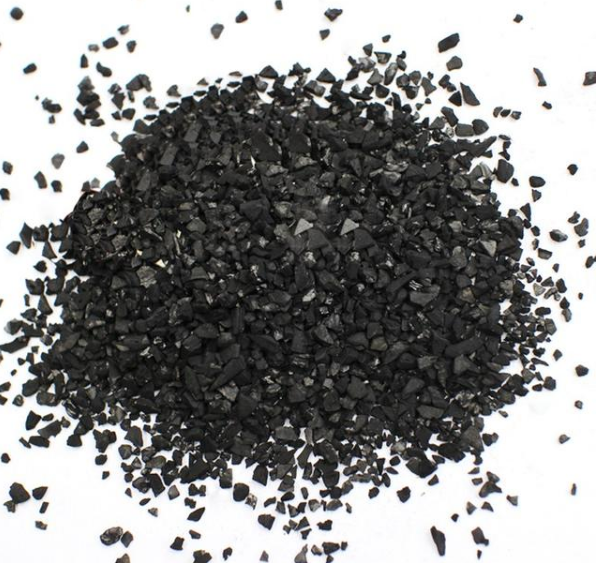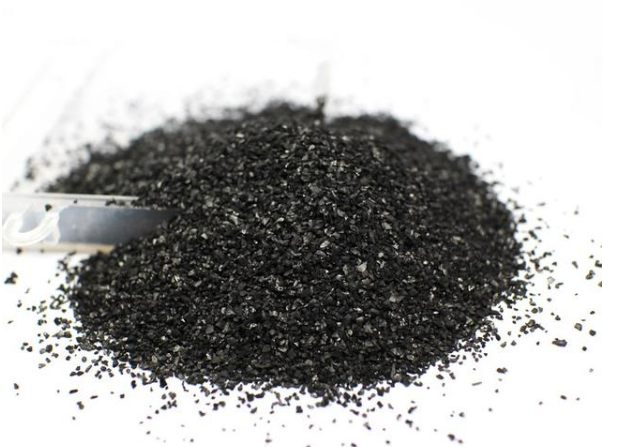Types and uses of activated carbon
Activated carbon is a kind of black porous solid carbon, which is produced by pulverizing, shaping or carbonizing and activating coal particles. The main component is carbon, which has a strong adsorption performance and is an industrial adsorbent with a wide range of uses. There are many kinds of activated carbon, which are suitable for factories, families, automobiles and other fields. Now Xinhui small editor will introduce them to you: types and uses of activated carbon
Activated carbon is divided into five categories according to its material
1. Coconut charcoal
Coconut shell activated carbon is made of high-quality coconut shells from Hainan, Southeast Asia and other places. The raw materials are screened, steam carbonized, refined, and then processed by a series of processes such as impurity removal, activation and screening. Coconut shell activated carbon is black granular, with developed pore structure, high adsorption capacity, high strength, chemical stability and durability. It is widely used in the deep purification of metallurgical and chemical industry, petroleum and electric power, food and beverage, drinking water, purified water, industrial water, and the refining of precious metals. It has the functions of decolorization, deodorization, adsorption and turbidity removal, and has a better matching effect with zeolite and molecular sieve, which is popular with users.
2. Pericarp charcoal
Shell activated carbon is mainly made from shell and sawdust by carbonization, activation and refining. It is characterized by large specific surface area, high strength, uniform particle size, developed pore structure and strong adsorption performance. It can effectively absorb free chlorine, phenol, sulfur, oil, gum, pesticide residues and other organic pollutants in water, as well as the recovery of organic solvents. It is suitable for pharmaceutical, petrochemical, sugar, beverage, alcohol purification industries, decolorization, purification, purification and sewage treatment of organic solvent. Shell activated carbon is widely used in drinking water, industrial water and wastewater deep purification of life, industrial water purification.
3. Woody charcoal
Lignocellulosic carbon is made of high-quality wood as raw material and in powder shape. It is refined through high-temperature carbonization, activation and various processes. It has the characteristics of large specific surface area, high activity, developed micropores, strong decolorizing power, large pore structure, large pore structure, and can effectively absorb various substances and impurities such as color in liquid.
4. Columnar carbon
It is made of high quality sawdust, charcoal and other raw materials by crushing, mixing, extrusion, molding, drying, carbonization and activation. Compared with the traditional coal-based activated carbon, the columnar activated carbon has lower ash, less impurities, reasonable pore size distribution, maximum adsorption and desorption, thus greatly improving the service life of the product (average 2-3 years), which is 1.4 times of the common coal-based carbon.
5. Coal charcoal
The product is made of high-quality anthracite as raw material, with the shape of column, particle, powder, honeycomb, spherical, etc. it has high strength, fast adsorption speed, high adsorption capacity, large specific surface area, developed pore structure and pore size between coconut shell activated carbon and wooden activated carbon. It is mainly used for high-end air purification, waste gas purification, high-purity water treatment, wastewater treatment, sewage treatment, etc.

Classification of activated carbon according to appearance and shape
1. Powdered activated carbon
Generally, more than 90% of the activated carbon passing 80 target sieve or with particle size less than 0.175mm is called powdered activated carbon or powdered carbon. Powdered carbon has the advantages of fast adsorption speed and full use of adsorption capacity, but it needs a special separation method. With the development of separation technology and the emergence of some application requirements, the particle size of powdered carbon tends to be more and more refined. In some cases, it has reached the micron or even nanometer level.
2. Granular activated carbon
Activated carbon with particle size larger than 0.175mm is usually called granular activated carbon. The amorphous granular activated carbon is generally made of granular raw materials after carbonization and activation, and then crushed and screened to the required particle size. It can also be made of powdered activated carbon added with appropriate binder and processed properly.
3. Cylindrical activated carbon
Cylindrical activated carbon, also known as columnar carbon, is generally made of powdery raw materials and binders by kneading, extrusion molding, carbonization, activation and other processes. It can also be extruded with powdered activated carbon and binder. There are solid and hollow columnar carbon. Hollow columnar carbon is a kind of man-made hole or holes in columnar carbon.
4. Spherical activated carbon
Spherical activated carbon, as its name implies, is a kind of round activated carbon. Its preparation method is similar to that of columnar carbon, but there is a process of spheroidization. It can also be made from liquid carbon containing raw materials by spray granulation, oxidation, carbonization and activation, and can also be processed by powdered activated carbon and binders. Spherical activated carbon can also be divided into solid and hollow spherical activated carbon.
5. Activated carbon of other shapes
In addition to the two categories of powdered activated carbon and granular activated carbon, there are other shapes, such as activated carbon fiber, activated carbon fiber blanket, activated carbon cloth, honeycomb activated carbon, activated carbon plate, etc.

Classification of activated carbon by use
1. Granular activated carbon from coal for solvent recovery
With natural high-quality coal as raw material, it is refined by physical activation method. It is black granular, non-toxic and tasteless, with developed pores. The three types of pores have reasonable distribution and strong adsorption capacity. In a wide range of concentration, it has strong adsorption capacity for most organic solvent vapors, and is widely used for recovery of benzene, xylene, ether, ethanol, acetone, gasoline, trichloromethane, tetrachloromethane and other organic solvents.
2. Activated carbon for water purification
It is made of high-quality natural raw materials (coal, wood, fruit shell, etc.) and refined by physical activation method. It is black granular (or powdery), non-toxic and tasteless. It has the advantages of strong adsorption capacity and fast filtration speed. It can effectively absorb the bad substances with small molecular structure and large molecular structure in the liquid phase. It is widely used in the purification of drinking water, industrial wastewater, sewage and river sewage Deodorization, purification and deep improvement of water quality.
3. Activated carbon for air purification
With high quality coal as raw material, it is refined by catalytic activation. It is black columnar particle, non-toxic and tasteless, with strong adsorption capacity and easy desorption. It is widely used in solvent recovery of gas adsorption, indoor gas purification, industrial waste gas treatment, flue gas purification and toxic gas protection.
4. Granular activated carbon from coal for desulfurization
It is made of high-quality natural coal and refined by physical activation. It is black granular, nontoxic and tasteless, with large sulfur capacity, high desulfurization efficiency, good mechanical strength, small penetration resistance and easy regeneration. Widely used in thermal power plant, petrochemical, gas, natural gas and other gas desulfurization.
5. Fine desulfurization activated carbon
The high-efficiency and high-precision gas-phase room temperature fine desulfurizer, which is made of high-quality columnar activated carbon as carrier, loaded with special catalyst and catalyst assistant, and dried, screened and packaged, is mainly applicable to the fine desulfurizing in the production process of synthetic ammonia, methanol, methane, food carbon dioxide, polypropylene, etc., and also used for the refined dechlorination and desulfurization of gas, natural gas, hydrogen, ammonia, etc. The sulfur content in the gas can be removed to 0.05mg/nm
6. Granular activated carbon for protection
The catalyst carrier carbon is made of high-quality raw materials (coal and shell), granular activated carbon refined by physical activation method as carrier, and advanced process equipment and strictly controlled special process conditions. It is widely used in phosgene synthesis, PVC synthesis, vinyl acetate synthesis and other industries as catalyst carrier and effective protection of ammonia, hydrogen sulfide, sulfur dioxide, carbon monoxide, hydrocyanic acid, phosgene, benzene and other toxic gases.
This paper was submitted by Hebei wanyang activated carbon factory. Huihui talked about the fine chemical industry editing and sending, reprinting and bidding





